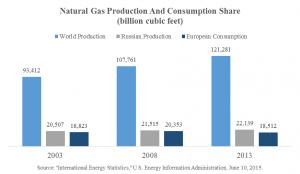The United States has officially surpassed both Saudi Arabia in terms of crude oil production. In 2014, the U.S. had already exceeded both Russia and Saudi Arabia in hydrocarbon, oil and natural gas, production. The U.S. Energy Information Administration (EIA) recently predicted that such high production is likely to continue into the future, with an expected 9.4 million barrels a day this year and 9.3 million barrels a day for 2016.
Adam Sieminski, U.S. EIA administrator, said:
Despite the large decline in crude oil prices since June 2004, this May’s estimated oil output in the United States is the highest for any month since 1972.
U.S. producers have managed to maintain production levels by becoming more efficient and generating new cost savings. Lower prices have led to many labor cuts, with a loss of nearly 100,000 energy-related jobs. Some companies have cut up to 40 percent of their service and supply crews. By April 2015, only 750 rigs were still in operation compared to 1,596 in October 2014.
Industry insiders were not surprised by the EIA report and had previously expected production to keep steady while the growth rate slowed. With prices hovering around $60 a barrel, shale oil exploration is still profitable and will continue be an important source of production.
The Organization of Petroleum Exporting Countries’ (OPEC) plan to cut prices and hurt high-cost U.S. shale producers, however, remains unchanged. On June 7, OPEC announced it would keep production levels unchanged despite pressure from countries within the organization to lower production and increase price.
Fawad Razaqzada, a technical analyst at the trading website FOREX.com, commented on OPEC’s influence saying:
The cartel is losing some influence to the U.S. shale oil market and to a lesser degree Russia, but it still remains a dominant force ― just not as powerful as before.
